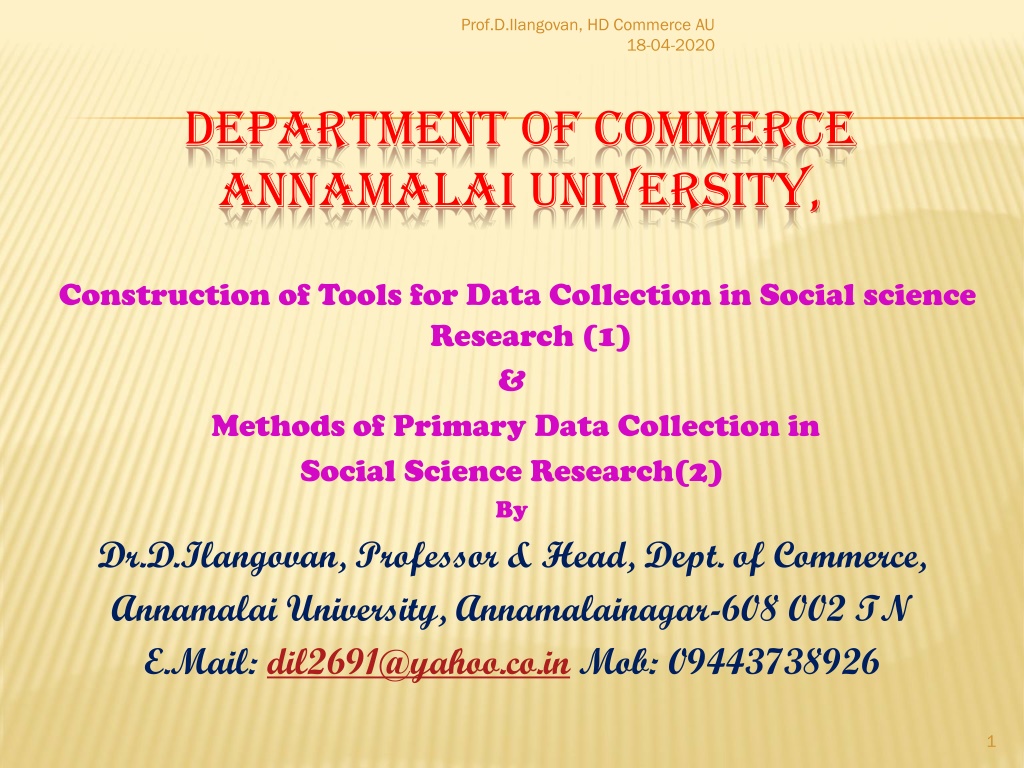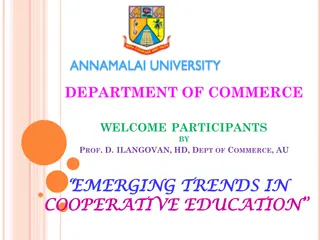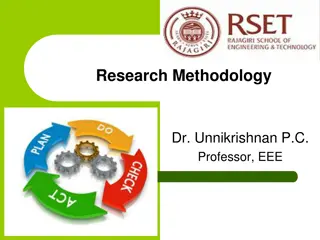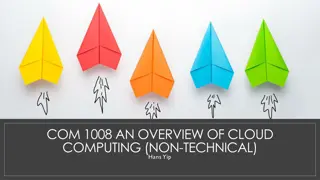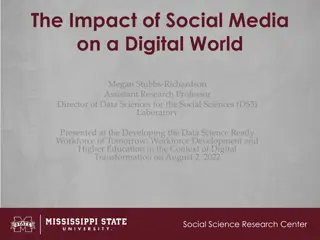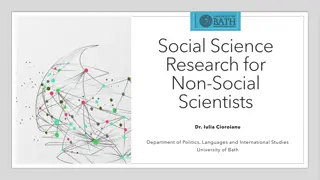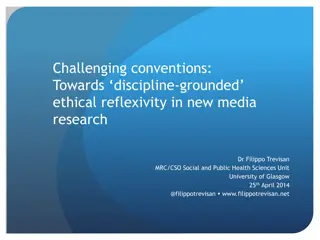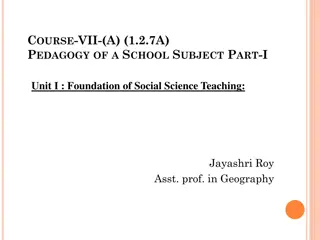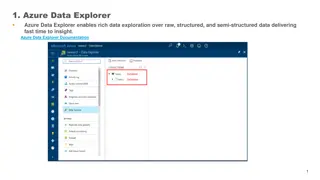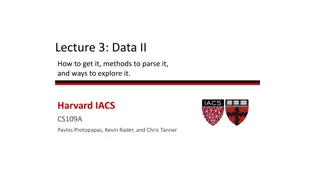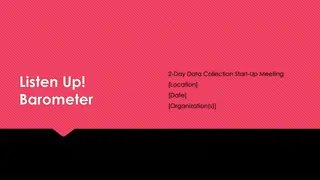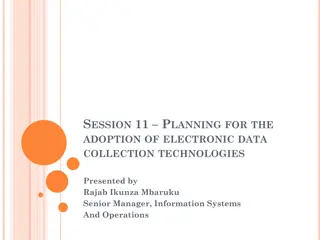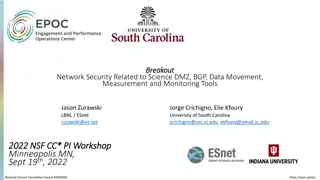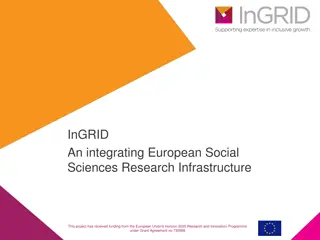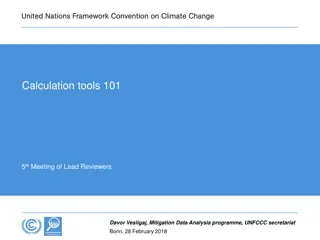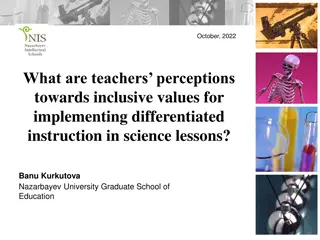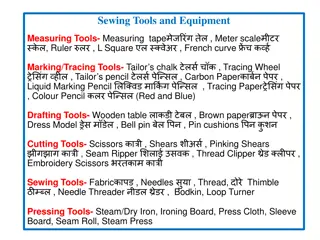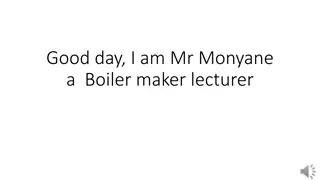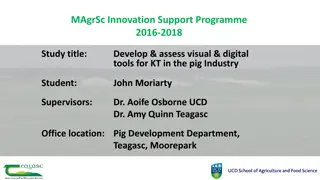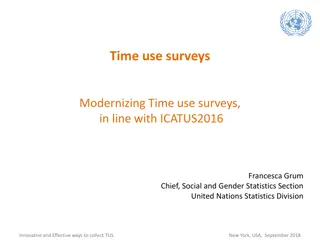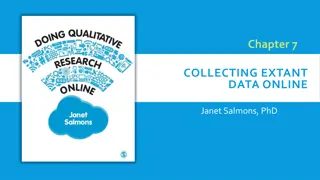Tools for Data Collection in Social Science Research by Prof. D. Ilangovan
Prof. D. Ilangovan from Annamalai University discusses the construction of research tools for data collection in social science research. He explores various types of tools including tests, record cards, research schedules, questionnaires, pre-tests, and pilot studies. The characteristics of a good test are also highlighted, emphasizing reliability, validity, objectivity, discrimination, comprehensiveness, and usability.
Download Presentation

Please find below an Image/Link to download the presentation.
The content on the website is provided AS IS for your information and personal use only. It may not be sold, licensed, or shared on other websites without obtaining consent from the author. Download presentation by click this link. If you encounter any issues during the download, it is possible that the publisher has removed the file from their server.
E N D
Presentation Transcript
Prof.D.Ilangovan, HD Commerce AU 18-04-2020 DEPARTMENT OF COMMERCE ANNAMALAI UNIVERSITY, Construction of Tools for Data Collection in Social science Research (1) & Methods of Primary Data Collection in Social Science Research(2) By Dr.D.Ilangovan, Professor & Head, Dept. of Commerce, Annamalai University, Annamalainagar-608 002 TN E.Mail: dil2691@yahoo.co.in Mob: 09443738926 1
Prof.D.Ilangovan, HD Commerce AU 18- 04-2020 WELCOME ALL FOR THEME DISCUSSION -1 CONSTRUCTION OF TOOLS FOR DATA COLLECTION IN SOCIAL SCIENCE RESEARCH 2
Prof.D.Ilangovan, HD Commerce AU 18-04-2020 CONSTRUCTION OF RESEARCH TOOLS Both Primary and Secondary Data are obviously important in social science research Sources of PD are normally the respondents themselves Sources of SD are the journals, newspapers, magazines, reports, monographs, web pages, etc More challenging one is the former and there need to be some basic tools for collection of PD 3
Prof.D.Ilangovan, HD Commerce AU 18-04-2020 VARIOUS TYPES OF TOOLS OF DATA COLLECTION I Tests II Cumulative Record Cards III Research Schedule IV Research Questionnaire V Pre-Test VI Pilot Study 4
Prof.D.Ilangovan, HD Commerce AU 18-04-2020 I. TYPES OF TESTS AS A RESEARCH TOOL Achievement Test Diagnostic Test Intelligence Test Aptitude Test Attitude Test Personality Test 5
Prof.D.Ilangovan, HD Commerce AU 18-04-2020 CHARACTERISTICS OF A GOOD TEST Reliability Validity Objectivity Discrimination Comprehensiveness Usability 6
Prof.D.Ilangovan, HD Commerce AU 18-04-2020 II. CUMULATIVE RECORD CARDS Very frequently used in social science research Cumulative record provides the data essential for comparing the present with that of the past The investigator can access relevant & ready made information from those cards anytime In social sciences these cards are used to study the trend in any behaviour, prices, growth and so on. 7
Prof.D.Ilangovan, HD Commerce AU 18-04-2020 TYPES OF CUMULATIVE RECORD CARDS 1. Index Card 2. Matter Card 3. Master Card While the first one includes basic information about the source of information, the second one details about the actual information in condensed form and so the third one tells about the entire approach and segments of data collected and review of literature made. Sample Cards for circulation among participants: 8
Prof.D.Ilangovan, HD Commerce AU 18-04-2020 III. RESEARCH SCHEDULE The most important tool for data collection in social science research It is similar to that of a mailed questionnaire Techniques of preparation of a schedule are the same with the mailed questionnaire Schedules are administered in person either by the researcher or by the designated enumerator Schedules are filled in not by the respondent but by the researcher/enumerator him/herself 9
Prof.D.Ilangovan, HD Commerce AU 18-04-2020 IV. RESEARCH QUESTIONNAIRE Questionnaire is a schedule to be filled up by an informant rather than by the researcher Questionnaire is an art and it takes the time of many people for weeks together It should be cleverly constructed to elicit more reliable and authentic information The respondent must be able to understand the questions purposely asked for in sequence 10
Prof.D.Ilangovan, HD Commerce AU 18-04-2020 DESIGN OF A QUESTIONNAIRE Covering Letter A descriptive title of the Research Study Purpose of the Study Name of the Sponsoring Agency/Institution Name & Address to which it is to be returned The Method of Filling it up A Guarantee for secrecy of the Respondent 11
Prof.D.Ilangovan, HD Commerce AU 18-04-2020 TYPES OF A QUESTIONNAIRE 1. Supply Type of a Questionnaire 2. Selection Type of a Questionnaire The former is open-ended in nature requiring high standard of literacy, energy, willingness and care on the part of the respondent, and the latter is yes or no type or true or false type or right or wrong type and MCQs if not any one of the above seeking just the participation of the respondent in the survey. 12
Prof.D.Ilangovan, HD Commerce AU 18- 04-2020 CONSTRUCTION TIPS OF A QUESTIONNAIRE Clear expression of items Use of right words wherever possible Provision of reasonable basis for response selection Avoidance of non essential specificity Avoidance of non- functional words Avoid trivial questions Suggested answers need to be as simple as possible Applicability of the question to the current situation Avoid asking opinion, unless it is unavoidable j. Avoid question too suggestive or inviting elusive responses k Phrase questions academically to avoid any embarrassment l. Avoid multiple responses having narrow difference between each other m. Include as many as check-mark questions for quick and easy responses n. Questions can avoid deep thinking on the part of respondents o. Avoid the use of words which are susceptible to double meaning p. Include questions for cross checking of answers to confirm earlier ones q. Straight and simple ones are welcome a. b. c. d. e. f. g. h. i. 13
Prof.D.Ilangovan, HD Commerce AU 18-04-2020 PHYSICAL FORMAT OF A QUESTIONNAIRE The Size [ scope of survey, space for answers / comments, paper size, font size and sub-titles] Number of pages [fewer the pages, the higher will be the percentage of return 4 pages] Lay out [ No over crowding, neat print, orderly/ impressive first page, grouping the questions] Interviewer Instructions [directions, guidance, examples, references, meaning and relevance] 14
Prof.D.Ilangovan, HD Commerce AU 18-04-2020 PHYSICAL FORMAT CONT D Quality and Colour of the paper [ to create a sense of commitment on the part of respondent Arrangement of the items of the questionnaire [to make the respondent feel comfortable] Covering letter[s] - to ensure authenticity Follow-up letter[s] to ensure responsibility Tips for avoiding practical problems on either side [ case by case approach through follow up] 15
Prof.D.Ilangovan, HD Commerce AU 18-04-2020 V. PRE-TESTING THE QUESTIONNAIRE To enrich the design and orderly content To ensure the validity and reliability Pre-test would include lay-out, question sequence, word meaning, difficult questions, instructions, and branching under sub-titles Researcher should conduct the pre-test Respondents need to be representative Critical pre-test calls for heterogeneous target population ; and the pre-test would end at the Meaningful modification of the questionnaire 16
Prof.D.Ilangovan, HD Commerce AU 18- 04-2020 VI. PILOT STUDY Categories/Purposes of Pilot Studies 1.Testing the Quality of mailing list 2. Checking the percentage of returns 3. Checking the effectiveness of data gathering process 4. Bias control advanced mechanism 5. Ensuring the reliability and validity 6. Ensuring the usefulness of data/ information collected 7. Minimizing the cost of enumeration It is not wise to avoid pilot study It is not wise to avoid pilot study as it ensures quality of the as it ensures quality of the research done and serving as research done and serving as a guide a guide within the range of a Research Supervisor. It is a small scale replica of the main study & a dress rehearsal and serves as a guide post Requires adequate sample frame Enables the researcher to acquire prior knowledge of sample units Rough estimation of non-contacts & refusals possible Suitable method of data collection could be determined Scope for understanding the content of the questionnaire/schedule It enables tests of efficiency It provides training to the interviewers It enables estimation of survey cost and duration a. b. c. d. e. f. g. h. i. 17
Prof.D.Ilangovan, HD Commerce AU 18- 04-2020 WELCOME ALL FOR THEME DISCUSSION -2 METHODS OF PRIMARY DATA COLLECTION IN SOCIAL SCIENCE RESEARCH 18
Prof.D.Ilangovan, HD Commerce AU 18-04-2020 WHAT ARE PRIMARY DATA? Primary data are original observation collected by the researcher or by his representatives FOR THE FIRST TIME for any investigation or used by them in their statistical analyses. Primary data are more reliable if they are valid Primary data are collected, in many cases, if the secondary data are unavailable or inaccessible to the researcher The choice of primary data depends upon the nature, objectives and scope of the research study 19
Prof.D.Ilangovan, HD Commerce AU 18-04-2020 METHODS OF COLLECTING PRIMARY DATA 1. Observation Method 2. Interview Method 3. Telephone Interview Method 4. Mail Survey Method 5. Other Methods like Warranty Card Method, Distributor or Store Audit Method, Pantry Audit Method, Consumer Panel Method, Projective Technique Method and Use of Mechanical Devices Method 20
Prof.D.Ilangovan, HD Commerce AU 18-04-2020 I. OBSERVATION METHOD MEANING It is the most commonly used one in behavioural sciences, by which, the information is sought by way of investigator s own direct observation WITHOUT ASKING ANYTHING FROM THE TARGET AUDIENCE This method eliminates the bias to the maximum and accuracy is maintained This method does not demand the cooperation of the target respondents and independent one 21
Prof.D.Ilangovan, HD Commerce AU 18-04-2020 TYPES, AIDS & PRINCIPLES OF OBSERVATION Four types viz., Structured/unstructured and participant/non-participant or disguised types Aids in the Field of Observations are as follows: Detailed field notes, Photographs, Maps, Schedule, Socio-metric Scales, Periodic Summaries and group-wise Checklists The principles of observation are: formulation of problem, Result recording Devices, Careful & Critical Observation, Independent Rating phenomenon and operational experience of recording instrument 22
Prof.D.Ilangovan, HD Commerce AU 18-04-2020 II. INTERVIEW MEANING AND TYPES It is a systematic conversation initiated for a specific purpose and focused on certain planned content areas of the chosen research On the basis of Target Audience, the types are Authoritative Interview, Historical Interview and Field Interview On the basis of Mode of Conducting, the types are Structured, Non-structured, Focused, Depth and Panel Interviews. 23
Prof.D.Ilangovan, HD Commerce AU 18-04-2020 TECHNIQUES OF INTERVIEW Set-up Interview Time Introduction Letter Establishment of Rapport with the Respondent Allay the Fear of the Respondents Creating the Interview Atmosphere Operation of Technical / Electronic Devices Being on the Brass-Track Avoiding the Presence of Other People Removal of Off-the Record Remarks 10. Nature and Method of Questioning 11. Handling the Controversial Matters 12. Less Talk and More Result Oriented Dialogue and 13. Attain a proper Exit from the Interview 1. 2. 3. 4. 5. 6. 7. 8. 9. 24
Prof.D.Ilangovan, HD Commerce AU 18-04-2020 III. TELEPHONE INTERVIEW Telephone Interview is the most Economical Method of primary data collection Two major pre-requisites in this method are Designing the Survey Instrument[list of questions] and Selection of the Respondents The determinants of this are Sample selection and Replying mind-set of the respondents Cost works out to be almost equal to personal interviews Two major risks associated are denials and forced disconnection during the process of interview 25
Prof.D.Ilangovan, HD Commerce AU 18-04-2020 IV. MAIL SURVEYS A survey conducted through post or e-mails is known as mail surveys Advantages are : wider distribution, limited bias both on distribution and interviews sides, firm replies, centralized control and cost-savings The limitations are: Incomplete mailing list, Postal/system problems, unanswered questions and non-availability of respondents Industrial/consumer surveys, Media studies and Surveys on Ads are the types of mail surveys 26
Prof.D.Ilangovan, HD Commerce AU 18- 04-2020 MAKE USE OF IT IN YOUR OWN RESEARCH WORK THANK YOU ALL FOR YOUR COOPERATION 27
